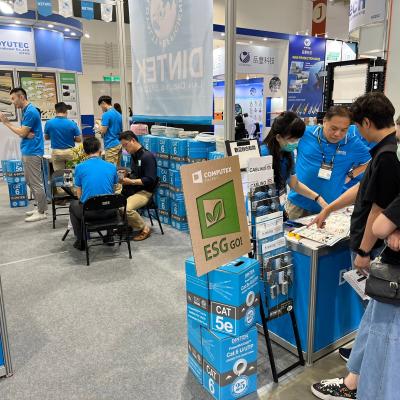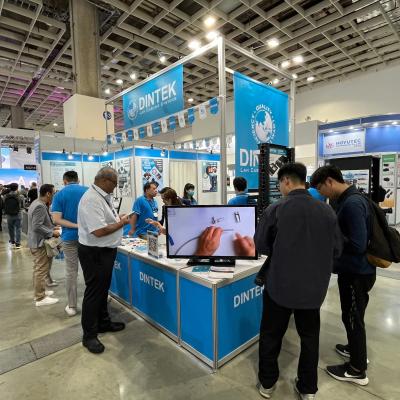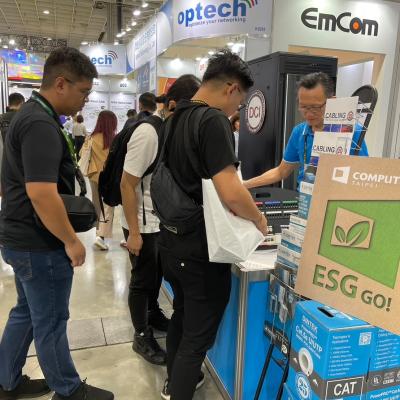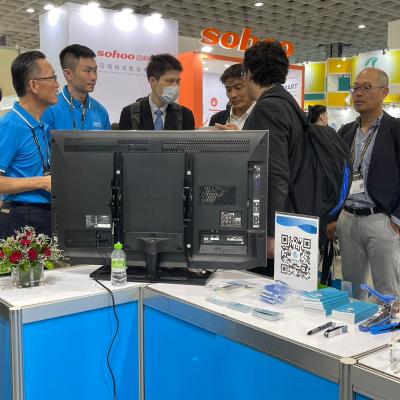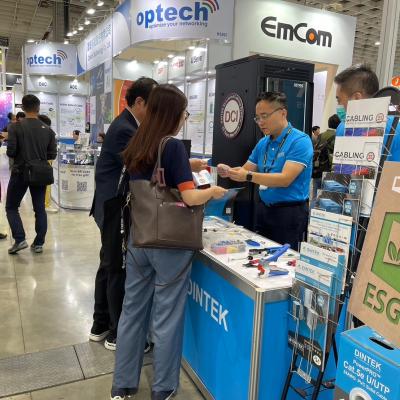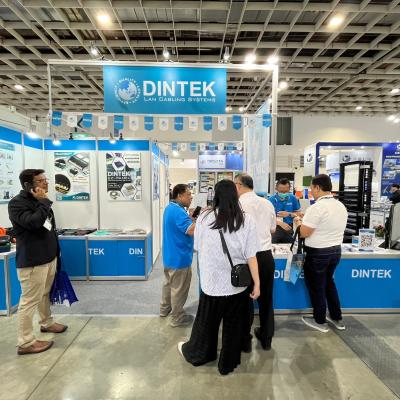RoHS-6 Compliance
RoHS (Restriction of Hazardous Substances) is a product level compliance based on the European Union's Directive 2002/95/EC and restricts the use of certain hazardous materials found in electrical and electronic products.
The RoHS directive was created to protect human & animal health, reduce the occupational risk to recycling personnel, reduce the need for special handling and treatment, and place fewer toxins into landfills and the environment. In addition, the RoHS directive is also closely linked with the Waste Electrical and Electronic Equipment (WEEE) Directive (2012/19/EU). Electrical and electronic waste (e-waste) is one of the fastest-growing waste streams. To solve this e-waste problem, the WEEE directive was created to set collection, recycling and recovery targets for electrical products.

The role of RoHS is to reduce harmful substances at the source, and it leads to a further saving in recycling costs. RoHS is part of a growing wave of environmental regulations or "green" initiatives and has been the most complex and expensive undertaking our industry has experienced. It has had a direct and significant impact on the entire industry at every level, from the retail store to manufacturers, distributors, integrators, supply chain, and OEMs, as well as marketing and R&D. Manufacturing companies around the globe are finding that the RoHS compliance is costly and poses significant technical challenges. However, in order to ensure that their products can be freely specified and used throughout the world, compliance is essential.
Restricted substances
Lead (Pb): used in solder, lead-acid batteries, electronic components, cable sheathing, x-ray shielding, and in the glass of cathode-ray tubes. Known human carcinogen that affects the nervous and renal systems.
Cadmium (Cd): used in electronic equipment, car batteries, metal coatings, and pigments. Known human carcinogen that affects multiple organ systems. NOTE: RoHS 0.1% lead amounts are exempted when used as an alloying element in steel, aluminum, copper; in specific solders; and in specific glass and ceramic applications up through 2024.
Mercury (Hg): used in batteries, switches, thermostats, and fluorescent lamps. Known human carcinogen that affects multiple organ systems.
Hexavalent Chromium (Cr VI): used in chrome plating, dyes, and pigments. While some forms of chromium are non-toxic, chromium VI can produce toxic effects in multiple organ systems.
Polybrominated Biphenyls (PBB): also known as congeners, PBBs are flame retardants found in computer monitor and TV plastic enclosures. They have been found in indoor dust and air through evaporation. Known human carcinogen that affects the endocrine system.
Polybrominated Diphenyl Ethers (PBDE): similar to PBBs - added to plastic enclosures to make them difficult to burn. Known human carcinogen that affects the endocrine system.
Bis (2-Ethylhexyl) phthalate (DEHP): DEHPs are used to soften PVC and vinyl insulation on electrical wires and in medical tubing. Known human carcinogen that affects the immune and reproductive systems.
Benzyl butyl phthalate (BBP): these are used to soften PVC and vinyl insulation on electrical wires.
Dibutyl phthalate (DBP): DBPs are part of the di-n-phtalate family used to soften PVC and vinyl insulation on electrical wires.
Diisobutyl phthalate (DIBP): these are also used to soften PVC and vinyl insulation on electrical wires.
Lead is the first and the foremost substance detailed in the RoHS directive. It is a core component of the solder that has traditionally gone into the manufacture of printed circuit boards (PCBs). The removal of lead from the PCB production process represents a challenge for the manufacturer, however, it is a trend that the electronics industry is moving towards Lead (Pb)-free or green manufacturing. In order to achieve RoHS compliance, manufacturers have to find some alternatives for the restricted materials. However, the RoHS/WEEE directives do not call for a total 100% elimination of these substances, instead, the RoHS has specified the maximum concentration values (MCV's) for each material. Effective July 1st, 2006, producers of new electrical and electronic equipment must demonstrate that their products do not contain more than the maximum permitted levels shown in the below table:
Restricted Materials | Maximum Concentration Value (MCV) | ||
|---|---|---|---|
Lead (Pb) | 0.1% by weight | ||
Cadmium (Cd) | 0.01% by weight
| Stockholm | |
Mercury (Hg) | 0.1% by weight
| ||
Hexavalent Chromium (Cr VI) | 0.1% by weight | China | |
Polybrominated Biphenyls (PBB) | 0.1% by weight | ||
Polybrominated Diphenyl Ethers (PBDE) | 0.1% by weight | Washington, D.C. | |
Bis(2-Ethylhexyl phthalate (DEHP) | 0.1% by weight | USA | |
Benzyl butyl phthalate (BBP) | 0.1% by weight | USA | |
Dibutyl phthalate (DBP) | 0.1% by weight | USA | |
Diisobutyl phthalate (DIBP) | 0.1% by weight | USA |
Who needs to be RoHS Compliant?
The RoHS directive places the responsibility of compliance on the "producer" of the equipment. According to RoHS, the "producer" is defined as any person who, irrespective of the selling technique used, including by means of distance communication according to Directive 97/7/EC of the European Parliament and of the Council of 20 May 1997 on the protection of consumers in respect of distance contracts:
(ii) resells under his own brand equipment produced by other suppliers, a reseller not being regarded as the 'producer' if the brand of the producer appears on the equipment, as provided for in sub point (i); or
(iii) imports or exports electrical and electronic equipment on a professional basis into a Member State. Any business that sells applicable electrical or electronic products, equipment, sub-assemblies, cables, components, or spare parts directly to RoHS-directed countries, or sells to resellers, distributors, or integrators that in turn sell products to these countries, is impacted if they utilize any of the restricted 10 substances.
In its role as a market leader in the supply of premium structured cabling products, DINTEK strives to maintain compliance with all relevant mainstream standards. This includes cables, patch cords, keystone jacks and patch panels which conform to the RoHS-6 and REACH directives.
Producers are responsible for self-declaring if products comply with the RoHS directives or obtain material declarations or certificates from their suppliers. Producers must be able to demonstrate compliance by submitting technical or other information to the enforcing authority on request, and they must retain such documentation for four years after the EEE is placed on the market.
Each European Union member state will adopt its own enforcement and implementation policies using the directive as a guide. Failure to comply with the requirements of RoHS Regulations will result in heavy fines or the removal of the manufacturer's products from the marketplace in some EU member states. Member states are obliged to engage in market surveillance according to regulation (EC) No 765/2008.
Although RoHS is a European Union (EU) Directive, manufacturers of EEE outside Europe must also abide by this legislation if their products are ultimately imported into an EU member state. The RoHS Directive is a reality. Even if the manufacturer doesn't face regulation directly, its customers probably will, and they will push the requirements down to the manufacturer. Failure to comply will be a competitive disadvantage that can result in customer and market share loss.
RoHS Initiatives Worldwide
US California RoHS Compliance | China RoHS Compliance | Japan RoHS (J-MOSS) Compliance | Taiwan RoHS Compliance |
|---|---|---|---|
Korea RoHS Compliance | Norway RoHS Compliance (PoHS) | India RoHS Compliance | Ukraine RoHS Compliance |
Singapore RoHS Compliance (SG-RoHS) | UAE RoHS
Compliance | Turkey RoHS Compliance | Eurasia/Russian RoHS Compliance |
Brazil RoHS
Compliance |
For details on DINTEK's RoHS compliance, please contact your distributor or email


